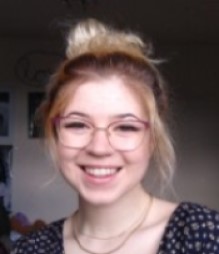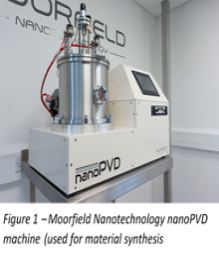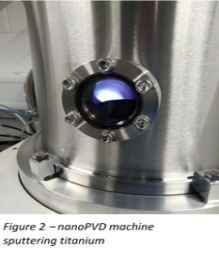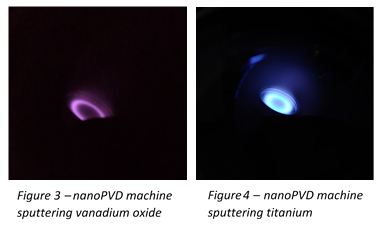By Melanie Randall-Evans //
 The world is ending. At least it seems that way; almost 1 million species are at risk of extinction in the near future [1], global warming has reached a peak higher than pre-industrial times and is projected to rise further [2] and all signs point towards us moving towards a human caused sixth mass extinction crisis [3].
The world is ending. At least it seems that way; almost 1 million species are at risk of extinction in the near future [1], global warming has reached a peak higher than pre-industrial times and is projected to rise further [2] and all signs point towards us moving towards a human caused sixth mass extinction crisis [3].
All this to say, that while it seems hopeless, the consensus among scientists and activists alike is that the move towards making the planet more sustainable needs to be swift and enacted with precision and urgency. One of these steps towards sustainability and the salvation of our planet is sourcing renewable energy with the necessary efficiency, while ensuring it is cost effective enough to be realistically utilised.
This was the focus of my project. Through the development of photovoltaic solar cells (PV cells); working to discover if their efficiency could be improved through increasing thickness of the semiconductor materials they were coated with, it was hoped that the findings produced would aid the manufacturing of smart glass and consequently the wide spread use of it.
Below is the original timeline of this project (1/7/2021 – 31/8/2021)
Week 1. – Lab induction and Health and Safety training.
Week 2. – Training on PVD machine for coating the substrates.
Week 3-5. – Coating substrates using PVD machine and surface analysis of coated and uncoated glass components using SEM-EDX.
Week 6-7. – Analysis of sample using spectroscopic techniques e.g. UV-Vis spectrometer.
Week 8. – Complete data analysis, prepare poster for presentation and attractive blog post on findings.
 Throughout this project I encountered many problems, and they even eventually halted the project all together. These problems ranged from issues accessing labs, caused by the Coronavirus pandemic, to the main necessary machine (the nanoPVD) of the material synthesis being temperamental, and problems with the coating targets, such as them splitting. I dealt with these as best I could, overcoming them with what was available to me. Face to face meetings were replaced by online teams calls, the PVD was reasoned with and eventually reliably sputtered.
Throughout this project I encountered many problems, and they even eventually halted the project all together. These problems ranged from issues accessing labs, caused by the Coronavirus pandemic, to the main necessary machine (the nanoPVD) of the material synthesis being temperamental, and problems with the coating targets, such as them splitting. I dealt with these as best I could, overcoming them with what was available to me. Face to face meetings were replaced by online teams calls, the PVD was reasoned with and eventually reliably sputtered.
 Unfortunately, the problem that couldn’t be solved was the aforementioned target issue. This meant that new targets needed to be acquired, a task that would not be possible within the time frame available. It also raised other issues around the safety of the materials being used. This meant that the project in total had to be halted before the end of the synthesis and no results could be produced from any analysis.
Unfortunately, the problem that couldn’t be solved was the aforementioned target issue. This meant that new targets needed to be acquired, a task that would not be possible within the time frame available. It also raised other issues around the safety of the materials being used. This meant that the project in total had to be halted before the end of the synthesis and no results could be produced from any analysis.
Working on this project provided me invaluable insight into realistic academic research, demonstrating that often research is simply not feasible at a particular time despite the best intentions by its researchers. This paired with the experience of independent working, enforced by the infamous virus, has prepared me well for the first year of my upcoming PhD, where I will be tackling similar issues, both inside the laboratory and out.
 References
References
(1). E. P. R. B. A. C. G. C. E. D. J. D. R. E. A. H. H. J. H. M. E. P. G. R. P. H. R. W. J. S. F. T. C. W. Bradshaw Corey J. A., “Underestimating the Challenges of Avoiding a Ghastly Future,” Frontiers in Conservation Science , p. 9, 2021.
(2). V. P. Z. H.-O. P. D. R. J. S. P. S. A. P. W. M.-O. C. P. R. P. S. C. J. M. Y. C. X. Z. M. G. E. L. T. M. M. T. a. T. W. Masson-Delmotte, “GLOBAL WARMING OF 1.5 ºC Summary for Policymakers,” IPCC, Geneva, 2018.
(3). P. R. E. P. H. R. Gerardo Ceballos, “Vertebrates on the brink as indicators of biological annihilation and the sixth mass extinction,” Proceedings of the National Academy of Sciences of the United States of America, pp.13596-13602, 2020.
*To view Melanie’s research poster and presentation recording, please click on the thumbnails below:

